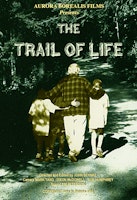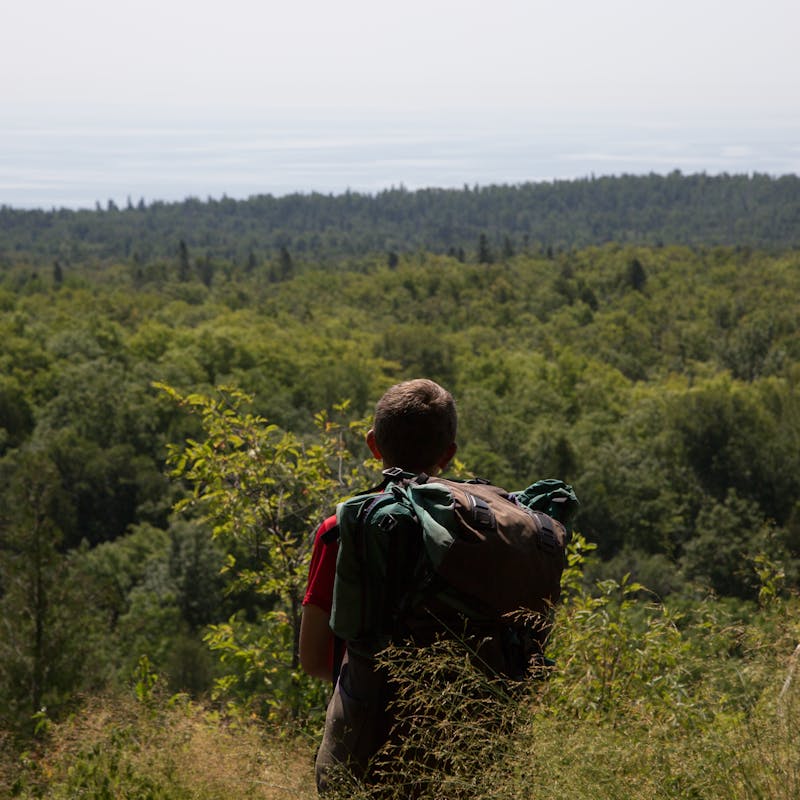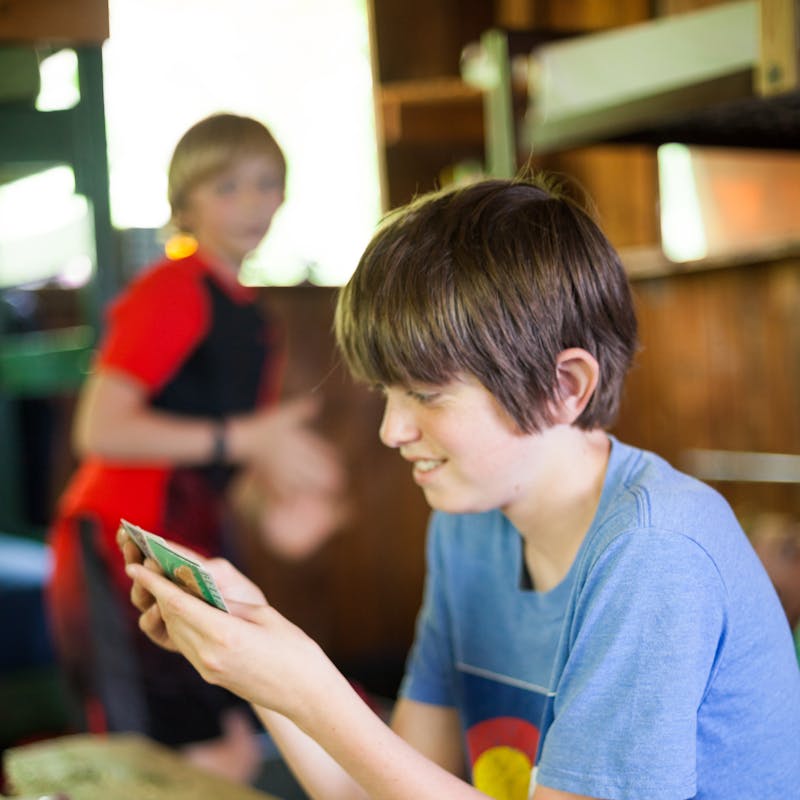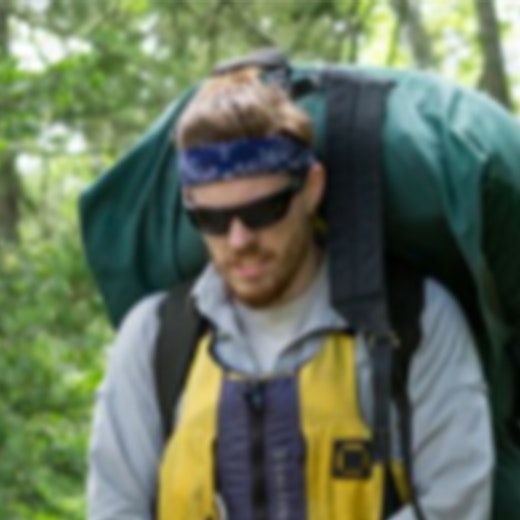
An Exclusive Interview with Filmmaker John Behnke [as told to John Burgman]
Anyone who has attended Camp Voyageur knows that embracing the past—and understanding history—is an important aspect of the summer experience. It’s why we still sleep in the same rustic cabins as campers did in the 1950s; it’s why we hit the trail with a purposefully low-tech approach; and it’s why there’s still a chair at the Fire Circle that is reserved every Wednesday and Sunday evening at dinnertime for Charlie Erdmann—camp’s founder. At camp, we appreciate the past, and we like to keep old memories and stories alive in the present.
In the early 1990s, John Behnke decided to document that distinguished history and those old memories in a way that had never been done before—by making a documentary film about camp. Behnke was a CV alum and an accomplished filmmaker at the time. Such credentials made him suited to both navigate the history of the place—including Mim and Charlie Erdmann’s purchase of the property and their subsequent expansion of the tripping program—and do justice to camp’s beautiful landscape through the medium of film. Behnke’s resulting feature, The Trail of Life, was released on VHS in 1992, and it served as unofficial “required viewing” for staff, campers, outfitted families, parents, and alumni who made their way to the Mess Hall over the next several years.
This year marks the 25th anniversary of the release of The Trail of Life. It has also been re-released in streaming form. To commemorate the anniversary and celebrate the film’s online release, we decided to catch up with John Behnke about his experiences as a documentarian and a camper—and get the behind-the-scenes scoop on how The Trail of Life came together.

CV BLOG: How did you first get interested in film, and what has that career path been like?
BEHNKE: A childhood glued to the TV watching cartoons left me with a passion for animation. So, when I was freshman in high school, I got a job to pay for a Super 8 camera to make my own cartoons. It turns out animation is hard work, so very quickly I switched to making live action films. Being a shameless ham, I cast myself in many of my early films. I learned quickly that I am a pretty bad actor and shifted to directing instead. After college I worked in television advertising for a couple of years before returning to grad school to get my MFA in film. I did the initial filming of The Trail of Life while working on that degree.
CV: Who are some of your influences when it comes to filmmaking?
BEHNKE: One of my most important early influences was skit night [at Camp Voyageur]. How to get a laugh, tell a story and get off the stage quickly were lessons I learned on the Mess Hall stage.
As a teenager the Marx Brothers had a profound influence on my sense of humor. One of my favorite camp memories was playing Groucho at skit night, with Grizzle Kline as Chico and Doug Merriman as Harpo. By college I had shifted to silent masters—Chaplin, Keaton and Lloyd who probably had the most impact on my filmmaking style. Many of my films have been feeble attempts to emulate their work.
CV: When did the idea for The Trail of Life come about?
BEHNKE: I started imagining a film about camp long before I thought about being a filmmaker. The idea of intercutting the camp road with Charlie playing On the Street Where She Lives probably came to me when I was a dishwasher. After meals Charlie would often play just for the kitchen staff. Listening to the music while we scrubbed away at the dishes gave me a lot of time to think. I can’t really say when I thought the film could be a reality, but certainly its origins were at camp.
At heart I was not a documentary filmmaker. It was only after I had shot another documentary, Norma Jean, that I decided I could give The Trail of Life a try. Though, if I’d known what a struggle it was going to be I might not have started at all.
CV: A struggle? That sounds intriguing! Would you mind telling about the filming process? What were some of the challenges—or struggles—that you remember running into?

BEHNKE: About half the film was shot in the summer of 1987. Unfortunately, some of the footage had a hair in the film gate—a common problem in the pre-digital age. I was unhappy with how it looked and decided to table the film for the time being. I shifted to another film to finish my degree.
After grad school I returned multiple summers to complete the filming. Because I was working at the time, I had to cram the shooting into two weeks of vacation. After each summer I’d develop what I shot, see what I had, and then have to wait another year to go back and pick up anything else I needed. All in all, it took five or six summers of filming.
Shooting on film was a lot more expensive than digital filmmaking is now, and funding was often a problem. Luckily many camp alumni helped me finance The Trail of Life, so in a real sense it is as much their film as mine.
CV: Did you have a big crew? And were campers curious about the camera(s) being toted around the peninsula?
BEHNKE: There were never more than three people in the crew—the cameraman, soundman and me. Often I ran sound and occasionally I did both sound and camera.
I don’t remember the campers being particularly impressed by the filming. They took it all in stride, just part of the CV experience.
CV: What are some of your general memories of working with Charlie Erdmann and interviewing him?
BEHNKE: Charlie loved being filmed. I think it appealed to the performer in him. His interview at the Fire Circle was my favorite. “The thing that highlights this picture is giving… the giving of yourself.” Great stuff. Even so, I not sure I really captured the sincerity and power of his character. Then again, I’m not sure any film could.
CV: What was it like filming and working with Mim Erdmann?
BEHNKE: I used every frame of film I shot of Mim. She was terrific on camera and many of her quotes still get to me. She had an excellent memory and was a wonderful storyteller.

CV: Nowadays—or at least in the DVD-era—it's common to have a "deleted scenes" section. Are there any scenes that you remember that didn't make it into the final cut of the film?
BEHNKE: One that I struggled to keep in the film right up until the end was a neat sequence of Deb making the donuts on Sunday morning. Everyone was having a great time and Charlie had several nice quips. Sadly it slowed down the overall flow. But the thing I probably regret cutting the most was cutting a scene of Charlie reciting Edwin Markham’s poem, Outwitted. It seems like it would fit in naturally, but trust me I just could not find a way to include it. In the end I decided it was more important to concentrate on Charlie’s own statements than someone else’s quote. Still…
CV: Well, one of my favorite moments in the film is when Charlie says he wouldn't have had a life he enjoyed more than being in camp and with campers. He says it so honestly and genuinely, with the beautiful lake and trees framed behind him.
BEHNKE: Charlie’s quote actually ends with, “being in camp with campers… yes, and my whole family.” In a way the film is the story of Charlie’s dream and how it was passed along to the next generation.
CV: Do you have any personal favorite scenes or moments from the film?
BEHNKE: One of my favorite shots is of the interview with Johnny [Erdmann] while he was sailing. There was barely enough room for the soundman and me to cram into the boat’s cockpit. Plus the 16mm camera was quite bulky and heavy, which made the whole setup precarious. When the wind caught the sail and boat healed up, I thought I was going to drop the camera into the bay. I didn’t—and got a nice action shot.
CV: You've now thankfully put the film online. Several people have already chimed in and said they remember going to the film's world premiere in Ely. What are your memories of that event?
BEHNKE: It was at the Ely High School auditorium, and I seem to remember Charlie wore a suit and tie, which surprised me, because I’d never seen him that dressed up at camp.
CV: I watch this film now, and it seems just as relevant to the camp experience. It's a time capsule, but it still embodies everything that camp is about. What's it like for you to rewatch the film now?
BEHNKE: There is a bittersweet quality to it now; so many of people in it are no longer with us, and yet I enjoying seeing and hearing them again. No film can truly capture what they were like, or what they meant to so many, but I hope The Trail of Life does honor to their memory.


